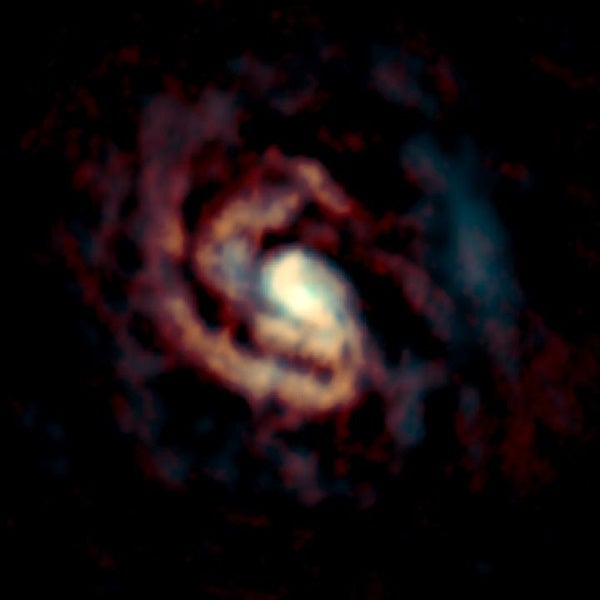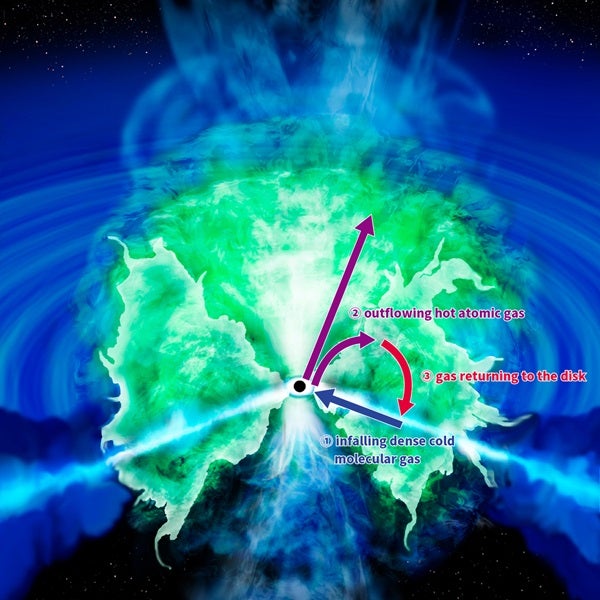Black Hole Fountains
Where once there were day-old donuts, now there may be ring-shaped fountains. New astronomical observations are rewriting scientists’ ideas of what the area around a black hole looks like, and the evidence seems to lean heavily away from something resembling the morning delicacy too closely.
Scientists believe that all large galaxies have a supermassive black hole at their center, pulling in everything around them with tremendous gravitational sway. Before material falls into a black hole, it builds up into a toroidal structure that looks something like a cosmic donut, called the torus.
Takuma Izumi, a researcher at the National Astronomical Observatory of Japan (NAOJ), led a team of astronomers that used the Atacama Large Millimeter/submillimeter Array (ALMA) to observe the supermassive black hole at the center of the Circinus Galaxy 14 million light-years from Earth. They found that the material surrounding the galaxy’s black hole actually looks different than expected.
Comparing the Cosmos
The team compared their observations with a computer-generated model that simulated gas falling towards a black hole. They found that what astronomers had previously thought of as a rigid donut structure around wasn’t actually solid at all — instead, they found a dynamic circular pattern of flowing gas that resembled a water fountain.
This “fountain” is created when cold gas falls towards the black hole and forms the torus. As the gas gets closer to the black hole, it starts to heat up and break apart into individual molecules and then atoms, which become ionized (as they lose electrons). Some of these atoms are absorbed by the black hole, but some shoot out above or below the disk in outflows. These atoms then fall back onto the disk, creating a three-dimensional structure that continuously circulates hot gas. The best terrestrial analogue is a continuously circulating water fountain, such as one that can be found in a city park.
“By investigating the motion and distribution of both the cold molecular gas and warm atomic gas with ALMA, we demonstrated the origin of the so-called ‘donut’ structure around active black holes. Based on this discovery, we need to rewrite the astronomy textbooks,” Izumi said in a press release.
This work was published October 30 in The Astrophysical Journal.











